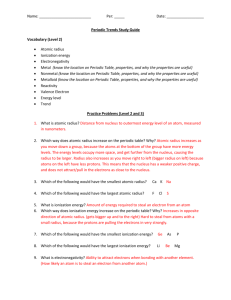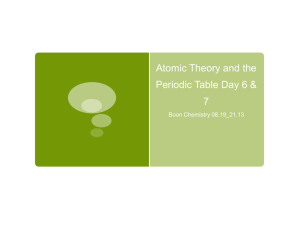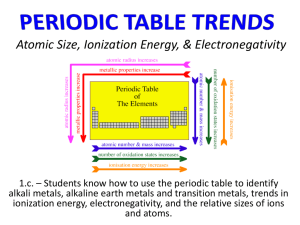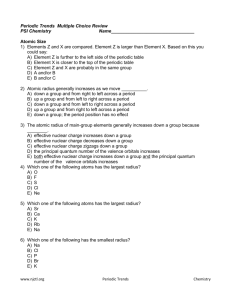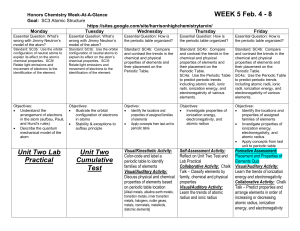Trends
advertisement
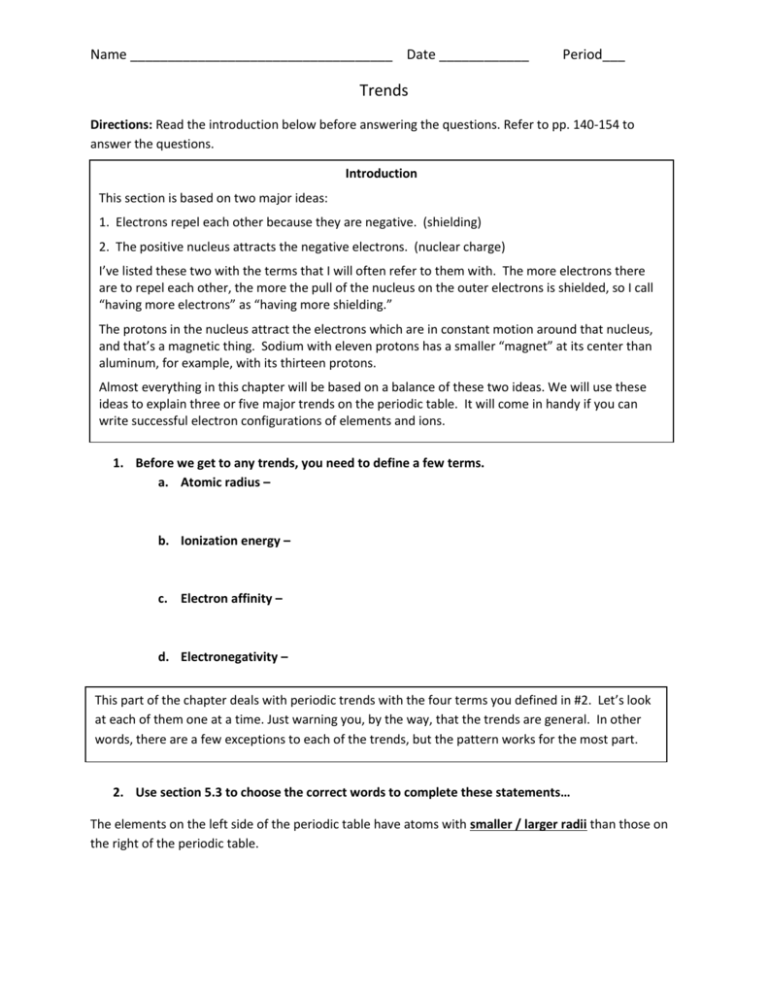
Name ___________________________________ Date ____________ Period___ Trends Directions: Read the introduction below before answering the questions. Refer to pp. 140-154 to answer the questions. Introduction This section is based on two major ideas: 1. Electrons repel each other because they are negative. (shielding) 2. The positive nucleus attracts the negative electrons. (nuclear charge) I’ve listed these two with the terms that I will often refer to them with. The more electrons there are to repel each other, the more the pull of the nucleus on the outer electrons is shielded, so I call “having more electrons” as “having more shielding.” The protons in the nucleus attract the electrons which are in constant motion around that nucleus, and that’s a magnetic thing. Sodium with eleven protons has a smaller “magnet” at its center than aluminum, for example, with its thirteen protons. Almost everything in this chapter will be based on a balance of these two ideas. We will use these ideas to explain three or five major trends on the periodic table. It will come in handy if you can write successful electron configurations of elements and ions. 1. Before we get to any trends, you need to define a few terms. a. Atomic radius – b. Ionization energy – c. Electron affinity – d. Electronegativity – This part of the chapter deals with periodic trends with the four terms you defined in #2. Let’s look at each of them one at a time. Just warning you, by the way, that the trends are general. In other words, there are a few exceptions to each of the trends, but the pattern works for the most part. 2. Use section 5.3 to choose the correct words to complete these statements… The elements on the left side of the periodic table have atoms with smaller / larger radii than those on the right of the periodic table. The elements on the bottom of the periodic table have atoms with smaller / larger radii than those on the top of the periodic table. This means that (name an element) would have the largest atoms and (name a different element) would have the smallest atoms. The elements on the left side of the periodic table have lower / higher ionization energies than those on the right of the periodic table. The elements on the bottom of the periodic table have lower / higher ionization energies than those on the top of the periodic table. This means that (name an element) would have the lowest first ionization energy and ___________________ (name a different element) would have the highest ionization energy. The elements on the left side of the periodic table have atoms with lower / higher electronegativities than those on the right of the periodic table. The elements on the bottom of the periodic table have atoms with lower / higher electronegativities than those on the top of the periodic table. This means that and (name an element) would have the highest electronegativity (name a different element) would have the lowest electronegativity. Positive ions – also known as cations - have larger / smaller radii than the atoms they come from. Negative ions – also known as anions – have larger / smaller radii than the atoms they come from. 3. Identifying trends practice: Circle the appropriate element for the given trend. a. Higher electronegativity: P or As b. Higher electronegativity: O or C c. Higher ionization energy: Be or Ca d. Higher ionization energy: Na or Al e. Bigger atomic radius: B or N f. Bigger atomic radius: K or Rb g. Bigger ionic radius: Li+ or Be2+ h. Bigger ionic radius: Sr2+ or Mg2+ i. Higher electron affinity: Cl or P j. Higher electron affinity: Br or I


